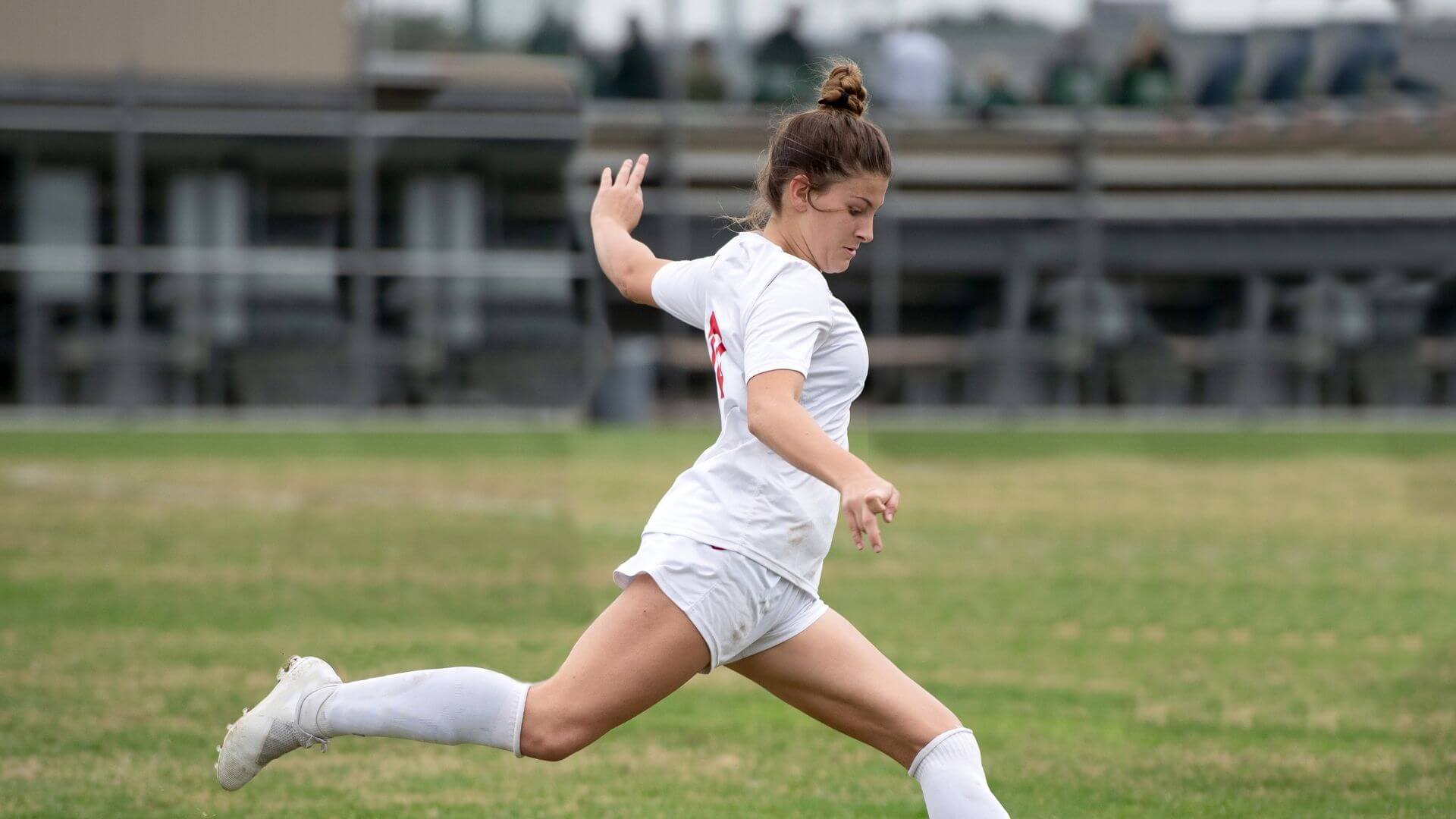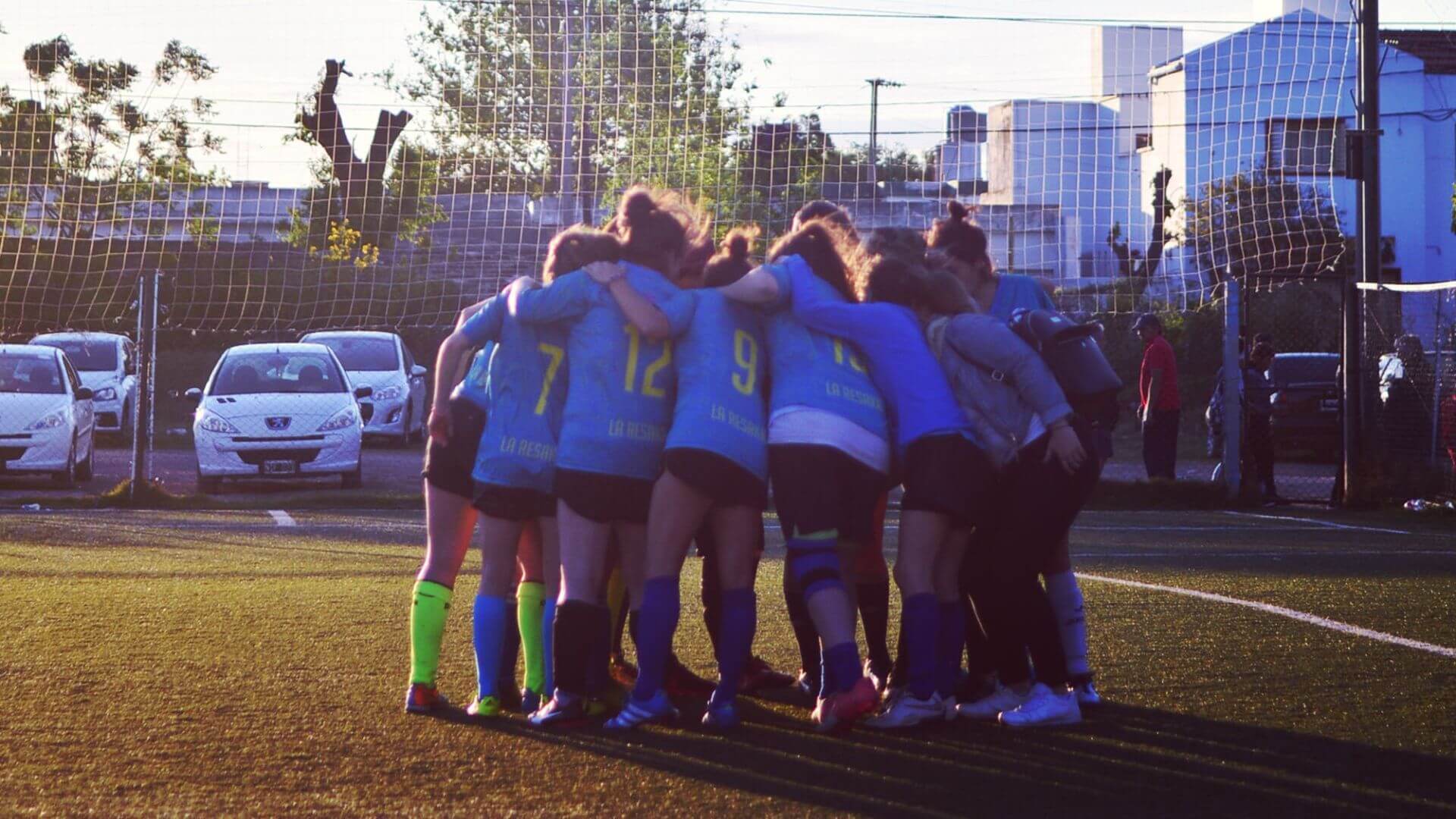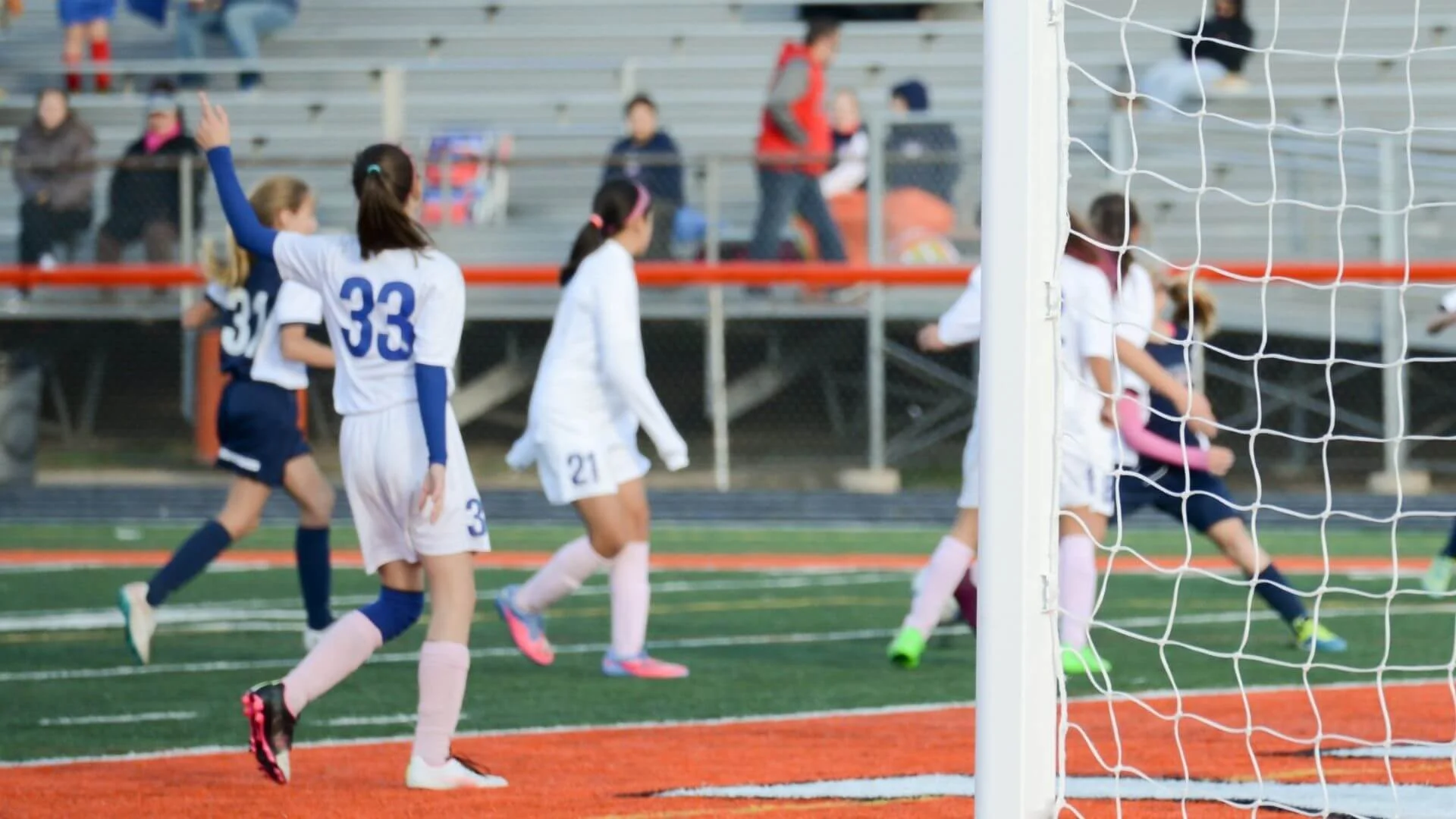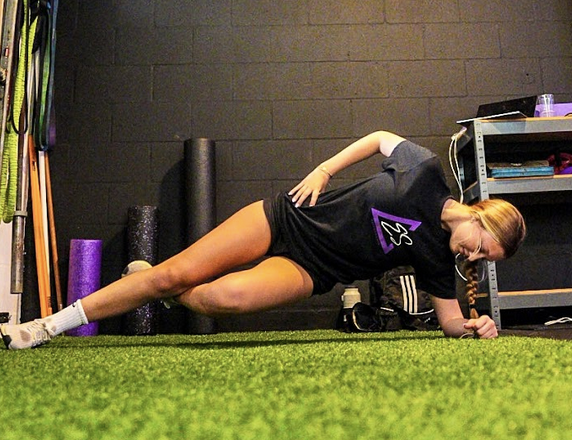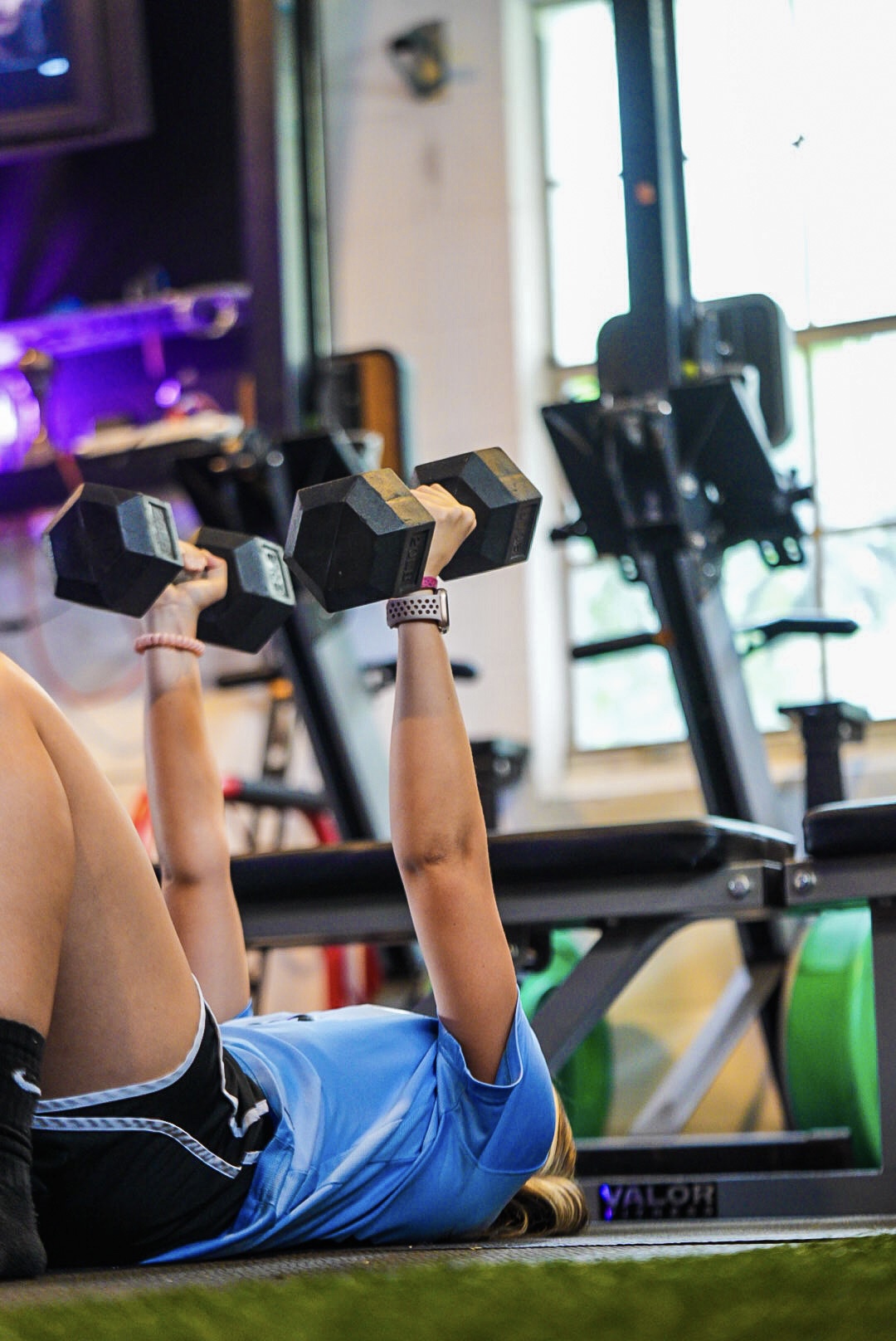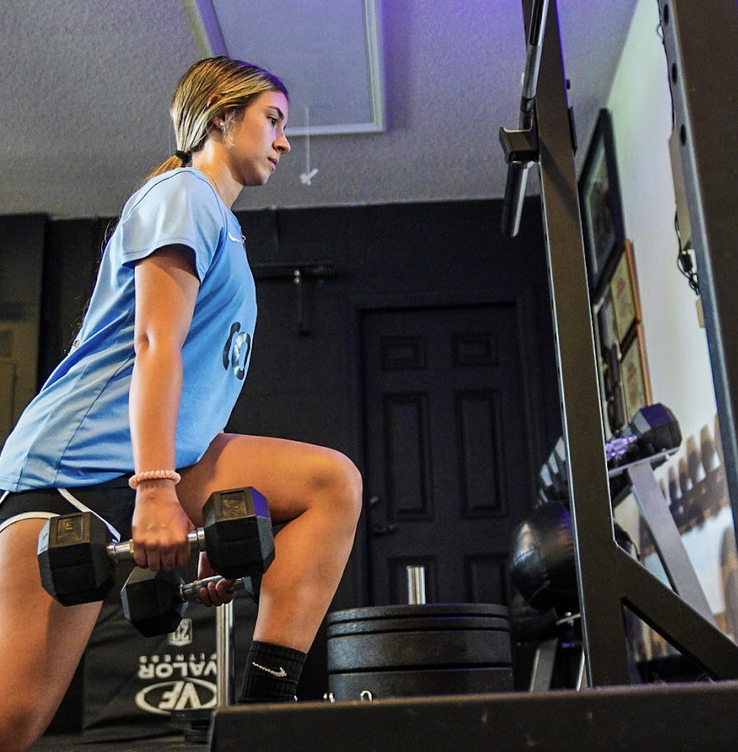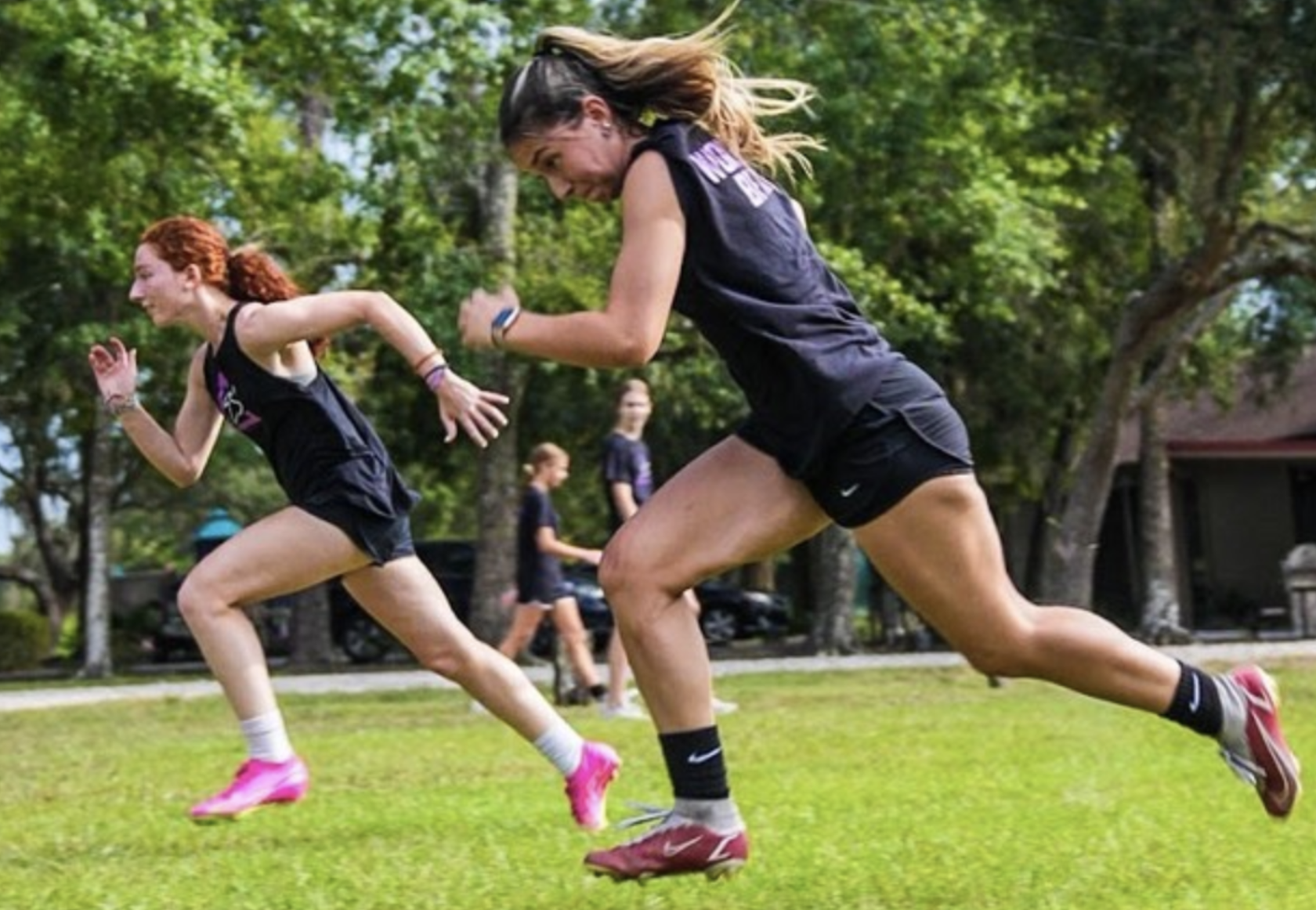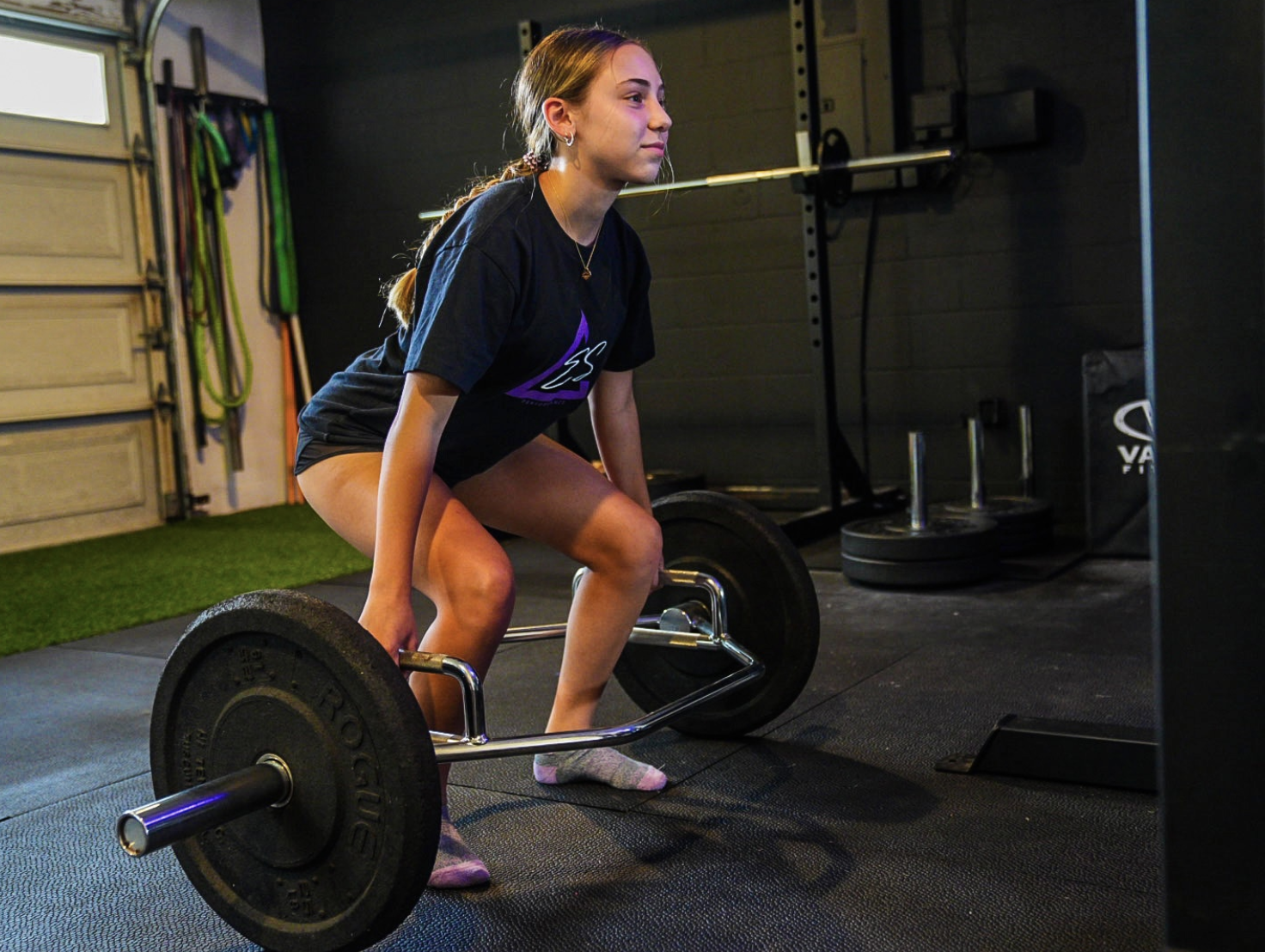In-Season Strength Training and Recovery for Soccer Players
It’s that time of year.
Back-to-school, Fall soccer season, more practices, more homework, and ahhhh, it’s just so much.
How will you fit it all in without feeling overwhelmed and stressed?
Adding to the chaos, the last thing you want to do is do in-season strength training. And I get it. It seems impossible to squeak this into your already busy schedule.
Alas, I have great news for you: in-season strength training doesn’t have to be stressful. It can be easy and help you stay healthy and well-recovered during the competitive season.
This article outlines why in-season training is so crucial for girls’ soccer players and how a program should look so you feel and play at your best.
Why In-Season Strength is Important
In-season strength training is like maintaining a car. You don’t just gas it up for a few months and expect it to run the rest of the year.
Strength training needs to be continued, even after an off-season of building muscle in the gym. Think about how hard you worked in the off-season to get strong, then suddenly, that ends. All of that work eventually dwindles as muscles begin to wither away. In fact, it takes just a month to lose muscular gains after stopping a resistance training program. Maintenance requires the stimulus to be consistent.
Girls’ soccer players must have strong muscles to handle the demands of multiple practices a week, then games on the weekends during the season. If muscles become weak, then the forces in soccer go straight to the bones, joints, and ligaments.
Having weak muscles also increases fatigue. The weakest girls poop out in the final minutes, and they take longer to recover because their muscles can’t respond well to stress.
What In-Season Strength Should Look Like
The biggest misconceptions about in-season strength training sessions are:
- They will make girls sore for soccer players
- They take up too much time in the schedule.
Let me address the first concern. Programmed properly, in-season strength sessions should not make players sore. They must be carefully written out by a performance coach, and programmed around the game schedule. The first thing I tell all of my ECNL and GA soccer players before the season starts is to text me your game and practice schedule for Fall. Then, I look at what day of the week games fall on and ensure my workouts allow them to be at their freshest for match day. For example, it wouldn’t make sense to do a lower body lift 1-2 days before a game because they wouldn’t be recovered enough. It would make more sense to have that earlier in the week after a full day of recovery.
In terms of set and rep schemes, in-season isn’t the time to do high volume. We never do more than 2-3 sets per exercise and rarely go above eight reps for most movements (unless it’s an upper body movement). High rep = more muscle soreness, which is a big no-n0 for in-season. For a hamstring exercise like the deadlift, we never want to fry the hamstrings, so we hang out in the 3-6 rep range.

For exercise selection, simplicity always wins. Our lifts attack each muscle group once (quadriceps, hamstrings, upper pull, and push), and if we have extra time, I may include an extra upper body pull. With this model, all athletes leave feeling fresh and not worn out and can even head to soccer practice after a lift.
Sample Workout:
- DB Row 3×6
- SL RDL 3×5
- RFE Split Squat 3×5
- Dumbbell Bench 3×6
- Band Pull Apart 2×10
Too, in-season speed maintenance is critically important so athletes stay “twitchy.” Speed is not addressed in soccer practice because coaches work on small-sided games and technical drills that don’t allow players to reach maximum velocity. In-season speed is so incredibly fun because it’s short and electric. We keep it low volume (<3-4 sprints timed) and then head to practice totally lit up. It’s okay to do speed before practice since it excites the Central Nervous System and gets players energized!
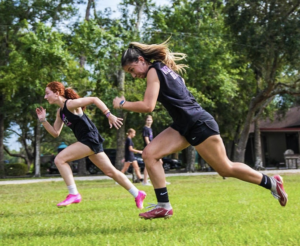
Sample Workout
- Fast High Knees 5 seconds
- Pogo Hops 5 seconds
- A Skip 5 seconds
- Timed 10 yard x 1
- 10M fly x1-2
This segues me to addressing the next concern: that in-season speed and strength sessions take too much time. Every workout should take less than 20 minutes max. In-season workouts are not meant to be lengthy. They’re meant to be short and of quality. (check out in-season remote workouts HERE)
Be Sure to Recover
The best athletes train hard but recover harder. During the season, athletes must take two full days off from practices and games. On average, the muscle recovery window is 48-72 hours for soccer players to be ready for high intensities again. Of course, some players can get away with a 24-hour recovery window, but this would mean their nutrition and sleep would have to be nearly perfect (over 20-30 grams of protein a meal, over 8 hours of quality sleep a night).
On the off days, active recovery is key. This doesn’t mean going for a jog. This is a total disaster because jogging is high impact and elevates the heart rate, which elevates cortisol. We don’t want to add any ounce of stress on our off day. Going for a slow walk or hanging out at the mall with friends is a better bet. It’s good to get out and move LIGHTLY to get blood flowing to the muscles.
Once you have nutrition, sleep, and off days nailed down, you can move on to more advanced recovery methods to get an edge–cold therapy, massage, etc.
Check out an in-depth podcast on these methods here:
How to Be Successful with In-Season Strength Training
Time management is key. Anyone can find 20 minutes a few times a week to maintain strength and speed in-season. Even if this means getting off TikTok for 20 minutes or getting to practice early to do in-season speed work, you can make it work. It’s even better to do it with a friend or the rest of your team to hold each other accountable for your workouts. Not only are you getting better, but your team is leveling up!
If your long-term health matters to you, you make it happen. Don’t fear in-season strength training. Make it a priority. Own your development.
For more on training the female soccer player, get Erica’s THE STRONG FEMALE ATHLETE book
 ABOUT THE AUTHOR
ABOUT THE AUTHOR

Erica Suter is a former college 3x All-American soccer player from Johns Hopkins University. She is giving back to the game and to female soccer players as a full-time performance coach. She holds a Master of Science in Exercise Science and has been helping girls with speed, agility, strength, and conditioning for over 12 years in the ECNL, GA, and NPL.
Her players have gone on to play college soccer at UNC, University of Maryland, Pittsburgh, Northwestern, West Point, University of South Florida, University of Charleston, MIT, Johns Hopkins, Carnegie Mellon, Rutgers, Towson University, and more.
Follow Erica on Twitter: @fitsoccerqueen
Check out her podcast: The Soccer Queens Podcast
_
GIRLS SOCCER NETWORK: YOUR SOURCE FOR GIRLS SOCCER NEWS



